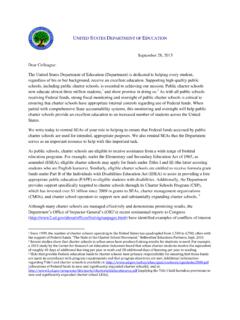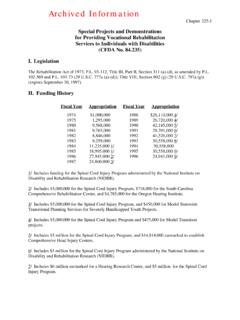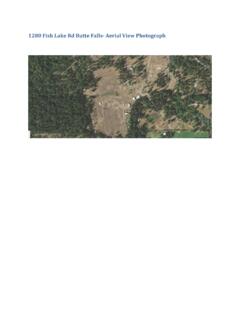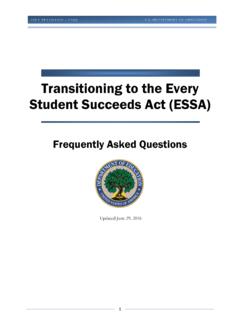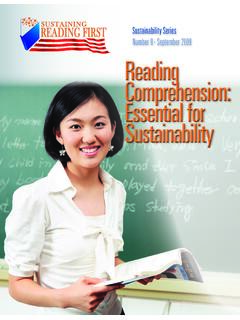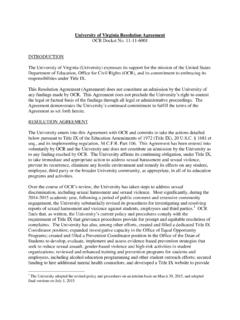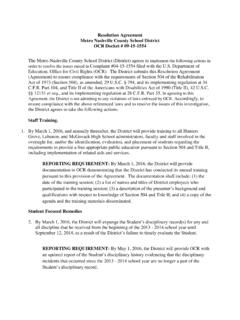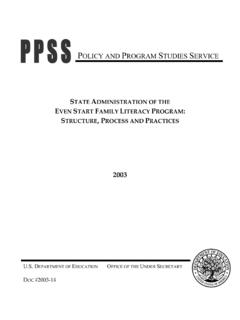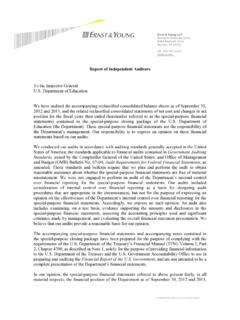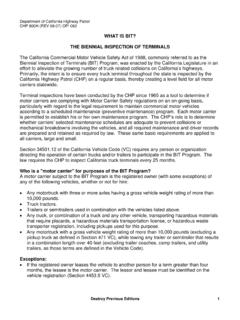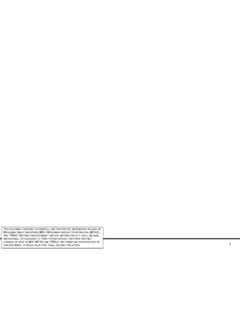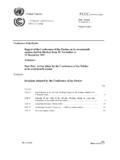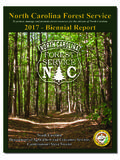Transcription of Archived: Paul Douglas Teacher Scholarship Program (CFDA ...
1 Chapter 532-1 paul Douglas Teacher Scholarship Program (CFDA No. )I. LegislationHigher Education Act (HEA) of 1965, Title V, Part C, Subpart 1, 99-498, as amended by (20 1104 to 1104k) (expires September 30, 1997).II. Funding History Fiscal YearAppropriation1986$9,570,000198715,50 0,000198814,840,000198915,235,000199014, 922,000199114,639,000199215,000,00019931 4,731,000199414,731,0001995229,00019960 III. Analysis of Program PerformanceA. Goals and ObjectivesThe purpose of the Program was to make available scholarships to outstanding high school graduates toencourage and enable them to pursue teaching careers at the preschool, elementary school, orsecondary school level. This is a close-out report on the Strategies to Achieve the GoalsThis Program awarded scholarships to high school seniors or graduates who were planning to pursue acareer in teaching.
2 Awards were for up to four years of higher education, and were to equal the cost ofattendance but not exceed $5,000 per be eligible for a Scholarship , the applicant had to have graduated from high school, have beenscheduled to graduate from high school by the end of the secondary school year, or have received acertificate of high school equivalency (GED). The applicant had to have ranked in the top 10 percentof the graduating class or to have had GED test scores equivalent to ranking in the top 10 percent ofgraduates in the state or in the nation. Furthermore, states had to establish selection criteria that bestmet their teaching needs in order to select scholars from among the eligible applicants. These selectioncriteria had to be reviewed and approved by the Secretary before a state used Douglas Program was administered by the state agency that administered the State StudentIncentive Grant Program , the Federal Family Education Loan Program (formerly the GuaranteedChapter 532-2 Student Loan Program ), or any other appropriate agency approved by the Secretary.
3 A selection panelor a grant agency in each state established specific scholar selection criteria. Particular efforts weremade to attract students from low-income backgrounds; ethnic and racial minority students; individualswith disabilities; other persons from groups historically underrepresented in teaching; persons whoexpressed a willingness or desire to teach in rural schools, urban schools, or schools having less thanaverage academic results or serving large numbers of economically disadvantaged students; or womenor minorities who showed interest in pursuing teaching careers in mathematics and science and whowere underrepresented in such states, the District of Columbia, Puerto Rico, and the Northern Mariana Islandsparticipated in the Program .
4 In addition, five insular areas consolidated Douglas funds under otherDepartment following table shows that between 1987-88 and 1992-93, the number of scholarships and theaverage award remained relatively constant. Table 1 Number of paul Douglas ScholarshipsAwarded, FYs 1986-1994 AverageFiscalYTotalFirst-timeRenewalAmou nt ofearAwardsAwardsAwardsAwards19861,6941, 6940$4,09819873,0251,9281,097$4,55519883 ,6141,9021,712$4,58319893,6151,2632,352$ 4,60019903,2481,1322,116$4,66919913,2021 ,2991,903$4,62019923,4361,2002,236$4,496 19933,4041,2042,200$5,00019942,9101,0131 ,683$5,000 Source: : Total scholarships times average awards does not equal appropriations for a given year becausefunds not expended in a given year were returned and could have been used for awards in a later Program Performance Indicators of Impact and EffectivenessThe congressionally mandated evaluation had not produced any outcome data on the Program beforethe Program and the evaluation were discontinued.
5 Therefore, information on Program outcomes arebased solely on data from the annual performance reports. These reports show that the total numberChapter 532-3 The data from one state were missing for the 1992-93 Program students who ever received a Douglas Scholarship (through 1992-93) was 11,622. The 1992-931reports indicated that as of FY 1992, 7,278 Scholarship recipients, or percent of the scholarshiprecipients overall, had completed their Teacher certification course of study. Of those, percenthad taught in the past or were teaching as of the 1992-93 school year. Approximately 2,348 recipients( percent) had completed their Scholarship obligation, and 2,131 ( percent) had completedtheir obligation through teaching and not at all through repayment.
6 As of FY 1992, 465 scholarshiprecipients--4 percent of the recipients overall--were in repayment. In addition, less than 1 percent ofthe recipients overall--26 recipients--were in default. See also Office-Wide Performance Indicators forthe Office of Postsecondary Education displayed in the Overview (OPS) to the postsecondary Planned Sources of Information Program Contacts for Further InformationProgram Operations: Darlene Collins, (202) 260-3394 Program Studies: Liz Eisner, (202) 401-3630
